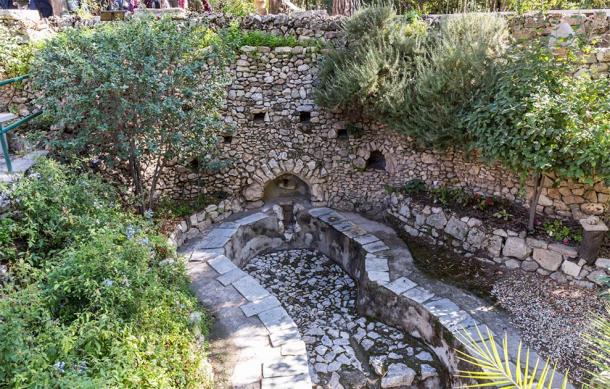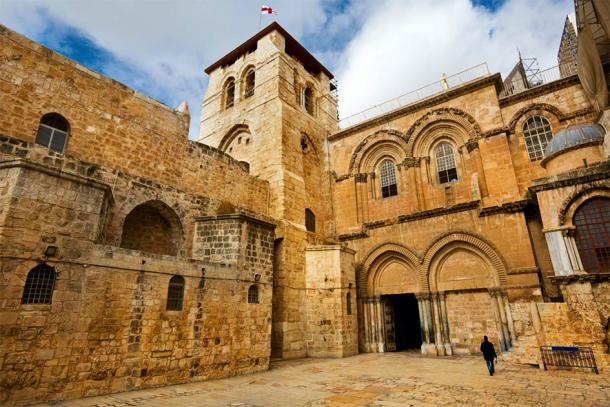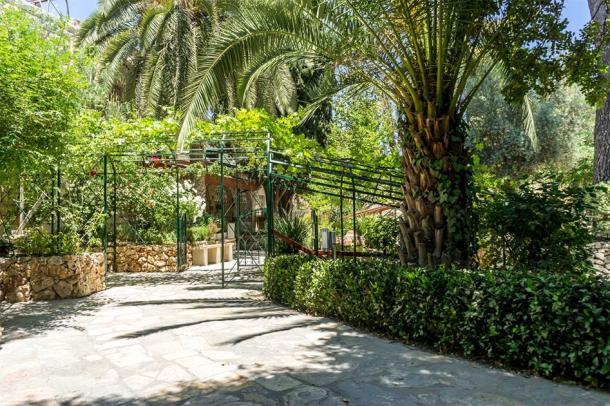Jerusalem is an ancient city, founded as the City of David in 1010 BC, but there is evidence of settlements going back to 4500 BC. It has been conquered more than 40 times by various nations, including the Ottoman Turks, Persians, Romans and the British. As a result, it is home to religious sites that are considered holy to three global religions. One of its most popular sites is the Garden Tomb, the place where Evangelical Christians and Protestant denominations believe Jesus Christ was buried and from where he resurrected – key events in the Christian faith .
The History of the Garden Tomb in Jerusalem
In the New Testament of the Bible, it is recorded that Jesus was betrayed by Judas and was crucified on the hill known as Golgotha (meaning ‘skull’ in Aramaic). He was buried by the Apostles in a tomb in Jerusalem. The exact location of the tomb is not referred to in the Christian Gospels, but it was adjacent to Jesus’ place of crucifixion.
The Christian texts state that Jesus rose from the dead and when his followers searched the tomb, they found that it was miraculously empty. According to the Christian Holy Scriptures, he later ascended into heaven. For many years the location of the tomb was lost. This was possibly a result of the great destruction wrought on Jerusalem during the First Jewish Revolt , the first of three major rebellions against the Roman Empire.
In the 8 th century AD, a Christian saint searched for the site but was unable to find it. The location of the tomb of Jesus remained unknown despite it playing a fundamental part in the Christian religion. In the 19 th century, archaeologists conducted a search and in the 1860s a tomb was located.

The Roman winepress in the Garden Tomb Jerusalem, Israel ( svarshik / Adobe Stock)
Based on the Biblical narrative of events, many scholars believed its location to be the place where Jesus was entombed. Because it was near a hill that was potentially Golgotha, it was claimed that this tomb was where the body of Jesus lay before he was resurrected. General Charles Gordon, one of the great heroes of the British Empire and best known for his death in Khartoum, popularized that the newly discovered tomb was where Jesus was interred after his crucifixion.
The belief that the tomb was that of Christ gained traction among many Protestant denominations. Since 1894, a Protestant non-denominational charitable trust based in the United States named The Garden Tomb (Jerusalem) Association, has overseen the site.
Controversy Over the Garden Tomb, Jerusalem
In the 20 th century, various archaeologists have claimed that the Garden Tomb could not be the place where Jesus was entombed. Based on its typology and certain features, it dates to the First Temple Period, roughly 6 or 7 centuries before Jesus died. It is very possible that the tomb was reused by his followers and there are precedents for such practices. The Gospel, however, makes it clear that Jesus was buried in a new tomb. Moreover, many Christians, including Catholics, hold that the place where Jesus of Nazareth was actually buried was near the present-day Church of the Holy Sepulchre.

Main entrance of the Church of the Holy Sepulchre in Old City of Jerusalem ( frag / Adobe Stock)
Many Christians argue that knowing the exact location of Jesus’ burial is not important and that this site supports believers in having a personal encounter with their Redeemer. It is worth noting that the association that manages the site does not claim it as the actual burial place of the Christian messiah.
Description of the Garden Tomb
The site is located near a rocky escarpment that may or may not be Golgotha, where Jesus was crucified. Enclosed by high walls, it is not far from the area known as Old City of Jerusalem and entrance into the gardens is through a set of high gates. The gardens have a number of walkways and an area where the faithful can pray. The tomb was carved into a rocky escarpment and the design dated to the First Temple. No remains or artifacts were ever found inside the tomb.
The garden surrounding the tomb has a trough and cistern, dated to the Crusader period (11 th to 12 th century AD), which have traditionally been used to irrigate the garden. An ancient wine press dating back to the Romans still remains.
Visiting the Garden Tomb, Jerusalem

The Gardens of the tomb in Jerusalem, Israel ( alefbet26 / Adobe Stock)
The location is near the historic Damascus Gate and some of the most famous and ancient sites in Jerusalem. The site is open daily, except Sundays, and guided tours can be booked.
Top image: The Garden Tomb, rock tomb in Jerusalem, Israel Source: valenizi / Adobe Stock
By Ed Whelan
References
Auer, B. (2012). Symbols of authority in medieval Islam: History, religion, and Muslim legitimacy in the Delhi sultanate . IB Tauris
Available at: https://scholarworks.wmich.edu/books/20/
Barkay, G. (1986). The Garden Tomb. Was Jesus Buried Here? Biblical archaeology review, 12(2), 40-57
Available at: https://ixtheo.de/Record/1649964196
Chadwick, J. R. (2003). Revisiting Golgotha and the Garden Tomb . Religious Educator: Perspectives on the Restored Gospel, 4(1), 4
Available at: https://scholarsarchive.byu.edu/cgi/viewcontent.cgi?article=1078&context=re
Kochav, S. (1995). T he search for a protestant holy sepulchre: the garden tomb in nineteenth-century Jerusalem . The Journal of Ecclesiastical History, 46(2), 278-301
Available at: https://scholar.google.com/scholar?hl=en&as_sdt=0%2C5&q=garden+tomb&btnG=
 RSS Feed
RSS Feed















 August 20th, 2020
August 20th, 2020  Awake Goy
Awake Goy  Posted in
Posted in  Tags:
Tags: 













